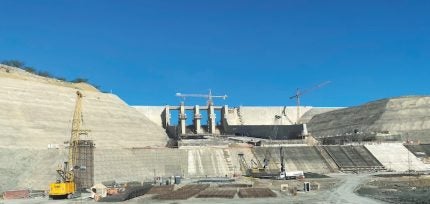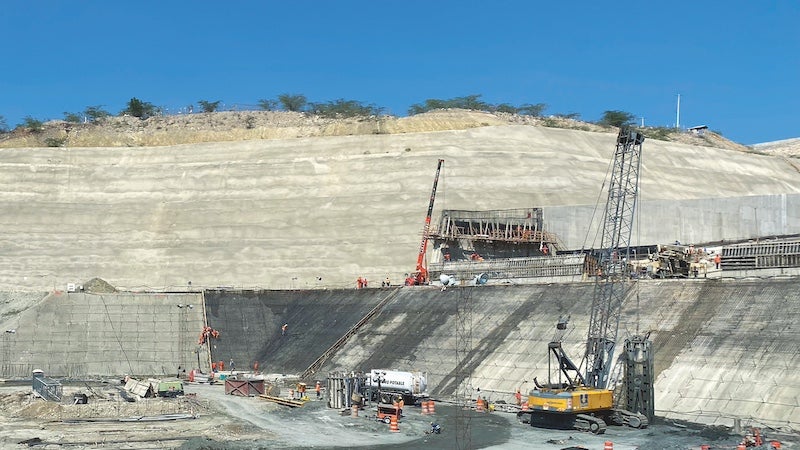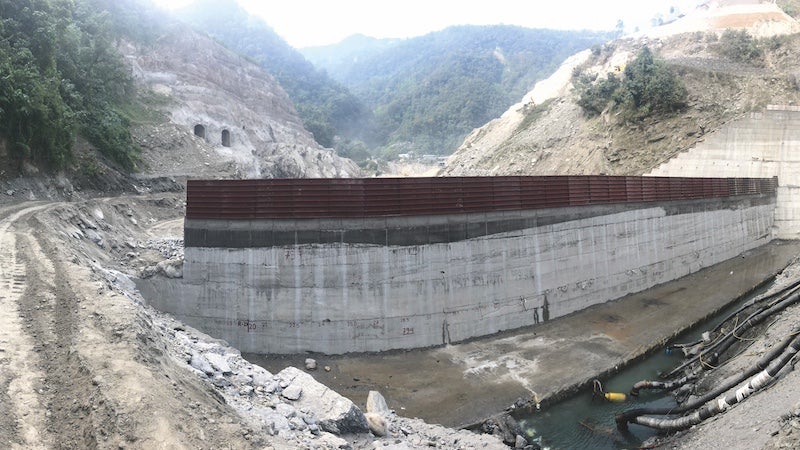
The Monte Grande dam in the southwest of the Dominican Republic is a key element of the country’s infrastructure and controls the Yaque del Sur River, provides flood protection, generates power, supports tourism and provides water for irrigation.
The Dominican subsidiary of BAUER was commissioned in 2019 to construct a cut-off wall to seal off the dam base. By May 2020, Bauer had constructed around 26,000m² over a length of 1350m, down to an average depth of 23m and with a thickness of 800mm underneath the dam foundations.
Then in May 2022, Bauer returned to the Monte Grande dam for Phase II which consisted of the construction of a reinforced diaphragm wall acting as a flip lip for the dam spillway, protecting the toe of the dam from erosion.
In total, 55 panels were installed with a thickness of 800mm. Panel lengths varied between 2.8m for a single-bite panel up to 7.1m for a triple-bite panel. A BAUER polymer-based stabilising slurry was used to assist the excavation work with two rope grabs. Depending on the requirements, different panel shapes were constructed including straight panels as well as L- and V-shaped panels.
In total, 7828m² of diaphragm wall with a total length of more than 320m was constucted. The excavation depth was 24.5m. Temporary flat steel stop-ends with installed water-bar made of rubber were used, followed by reinforcement cages of up to 15t per panel. Highly fluid (high slump flowable) concrete was used as the filling material.
One particular challenge during this project was the excavation of the existing hard soil and rock layers. The geology encountered was very heterogeneous and the strength of rock, particularly the limestone and sandstone, was high with values up to 45 MPa. To enable the excavation of the panels with rope grabs, pre-drilling was carried out in some cases. This made it possible to relax the strength of the rock and minimise wear and tear on the grabs as far as possible.
The work executed by Bauer was successfully completed in March 2023.

Bauer in India
BAUER Engineering in India was also tasked by Indian company Jaiprakash Associates Limited with the construction of a cut-off wall, as part of the 900MW project Arun III HEP on the Arun River in Nepal. The goal was to achieve a seal and reduce seepage water below the upstream cofferdam and in the left and right abutments.
The scope of service provided by BAUER included the execution of 3500 running meters of drilling and injection work on the cofferdam. In the granular construction soil, composed of sand, gravel, rubble and boulders, the pore injections were executed by means of tube-à-manchette and annular grouting.
“Using the pore injections, we were able to fill the pores in the very loose soil with cement slurry and thereby reduce its permeability,” Project Manager Satish Kumar explained
In addition to the pore injections, Bauer also carried out rock grouting in order to fill gaps, fractures and cavities in the rock.
The remote location in the Himalayas provided logistical challenges along with a tight schedule as snowmelt starts in March, causing the water level in the river to rise and making work more difficult.
A KLEMM KR 909 was used for the drilling and injection work.







